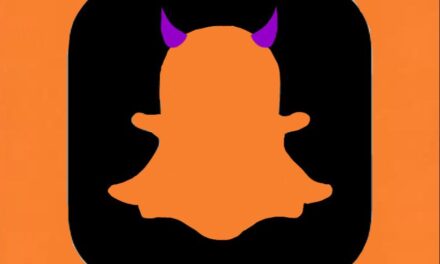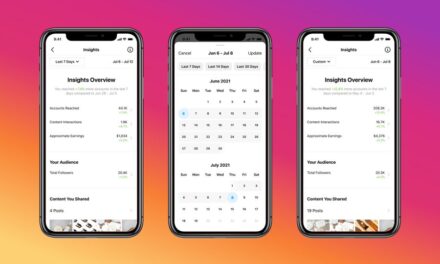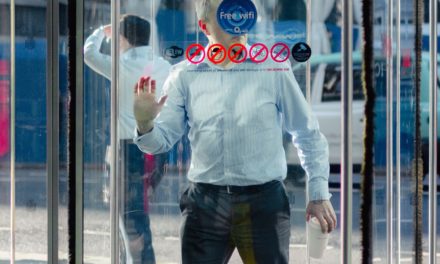Repost from: https://www.ama.org/publications/MarketingNews/Pages/how-win-friends-influence-millions-rules-influencer-marketing.aspx
Under the sunlight of social media, few strategies have blossomed like influencer marketing. But when used errantly, few strategies have the same capability to quickly wilt a brand.
Influencer marketing is built to win consumer trust, especially when compared with traditional online ads. Consumers are blind at best and irritated at worst by pre-roll, pop-up and banner ads. Influencer marketing is less intrusive and more flexible than traditional online ads; it can be small and quiet, big and booming or somewhere in between. An influencer can be a teenage girl posting about her favorite hamburger joint to make a few bucks, or it can be reality star Kim Kardashian posting about a clothing line to make $500,000. Whether teenager or celebrity, influencers create and post ad-supported content to their own accounts, bypassing ad blockers and potentially popping into millions of social media feeds. Followers can block or unfollow individual influencers, but there’s no ad blocker for influencers as there is for traditional ads.
But marketers see influencers as more than just a means to bypass ad blockers: They see influencers as a chance to engage with a new generation of consumers, people who have always had the option to skip, ignore or completely avoid ads.
It’s unsurprising, then, that influencer marketing has grown with such vigor. In 2017, influencer posts grew by 198%, according to a survey by Klear. Another survey, the Association of National Advertisers’ April 2018 report “How ANA Members Are Using Influencer Marketing,” predicts that marketers will spend $101 billion on influencer campaigns in 2020, up from $81 billion in 2016.
Despite marketers spending more on influencer marketing, it’s “still the Wild West,” says Karen Koslow, co-founder and managing partner of health and wellness influencer agency Wellness Amplified. “Brands don’t understand how to use it, but they have everybody knocking on their door about it,” Koslow says. “The question is: Are we being smart?”
Many marketers aren’t being smart, according to Nathan Michael, a Chicago-based influencer who also founded creative firm Low Res Agency. He says that many marketers seem to forget the purpose of influencer marketing—engaging, honest and authentic communication with potential customers—as soon as they adopt it. But in a market saturated with disingenuous ads, Michael says that winning brands will drop the pretense of one-to-many advertising and adopt the many-to-many communication of influencer marketing. This, he says, will authentically connect brands to their biggest fans.
“Good marketing comes with knowing how to create a good relationship,” Michael says. “The best marketers understand that the human experience is all about connection. If you’re not thinking about how you’re connecting with people, your brand is probably not going to have a very big fingerprint in the world.”
Most marketers understand how important authenticity and relationships are in influencer marketing. The ANA reports that 58% of brands worked with fewer than 25 influencers over the past year, which shows marketers’ desire for better relationships with influencers, the report says. But as Koslow said, many corners of influencer marketing still seem lawless, devoid of the ethics, principles and creativity that compose great marketing campaigns.
“The issue for influencer marketing is there’s not enough strategy or discipline, and there’s too much people-chasing,” Koslow says.
Some brands have fostered authentic connections while others have chased people—and their gigantic audiences—too hard, producing useful examples of successes and failures in influencer marketing. Stories of both can guide marketers toward ethical, creative and authentic influencer campaigns.
The Legal Necessity of Transparency
In 2014, Warner Bros. paid several YouTube personalities to review the video game “Middle Earth: Shadow of Mordor.” The campaign reached millions of people, but led to the Federal Trade Commission investigating Warner Bros. before accusing the company of paying for reviews. Payment wouldn’t have been a problem if the influencers were transparent with viewers about the transaction, but the FTC said viewers received no notice that the reviewers’ opinions were paid, not impartial. Warner Bros. asked the reviewers to discuss the game positively and not show “bugs or glitches that may exist” or any “negative sentiment,” according to the FTC’s complaint.
It’s unclear how much money, if any, the FTC fined Warner Bros. (the FTC did not respond to requests for comment regarding this case), but the commission publicly demanded that Warner Bros.’ future influencer campaigns follow the FTC’s sponsored content rules. That is, Warner Bros. can’t misrepresent an influencer marketing campaign as independent reviews, and it must disclose any material connections—money, products or otherwise—between the company and its influencers.
The FTC clarified the reason for these rules in an online endorsement guide: “On a personal blog, a social networking page, or in similar media, the reader might not realize that the reviewer has a relationship with the company whose products are being recommended. Disclosure of that relationship helps readers decide how much weight to give the review.”
Koslow says that even if companies only send influencers small products or coupons in exchange for social posts, influencers must tell viewers they were compensated. Influencers can tell viewers with a hashtag (#ad, #Partner and #Thanks[brand] are all popular), a lead-in like “Sponsored:” or any other way that clarifies their relationship to the company. For example, some video influencers mention their ties to the company within the video or its description, while many bloggers lead their post with an italicized acknowledgment that they have been paid by a company.

Influencers Should Actually Use Your Products
Transparency appeases the FTC, but Koslow says that it also builds trust with followers. Trust is essential; the best influencer marketing trades on it. If a company or an influencer betrays that trust, the campaign may harm the reputation of both. “There are a lot of people out there who don’t care what the product is,” Koslow says. “As long as the price is right they’re taking it. But as a follower, you have to see whether you think somebody is a total shill versus someone who needs to make money but is still believable.”
Koslow says that her clients always use a product before posting about it. As health and wellness professionals, their credibility is at stake each time they post a recommendation. She believes this should be a rule across influencer marketing.
A 2012 Microsoft Windows 8 ad campaign gives an object lesson as to why it’s a bad idea to flout this rule. The $1.5 billion ad blitz for Microsoft’s new flagship operating system paid for endorsements from celebrities such as Gwen Stefani, Jessica Alba and Oprah Winfrey. Perhaps this was a good idea, but a tweet from Winfrey came across as disingenuous.

This was the worst-case scenario for both Winfrey and Microsoft; she looked like a shill, and Microsoft looked like it couldn’t pay people to use its new operating system. Scenarios like this are why brands need to work with genuine influencers who actually use their products.
When Low Res Agency’s Michael started as an influencer, he stuck to working with Chicago brands that he already liked, such as local bars, coffee shops and eyewear stores. Now that Michael runs Low Res Agency, he calls “natural fit” the most important part of an influencer campaign. Natural fit is what brands must find in influencers to avoid Oprah-Microsoft moments and to create content that resonates with followers.
“Most brands don’t know how to authentically [find influencers] because they don’t have a person in the marketing department who is discerning enough to look at whether it’s actually a good partnership,” Michael says. “To see if this person has the same values or carries themselves aesthetically in the same way as we do is important when we’re considering a new partnership. Otherwise, it’s going to cause confusion with your followers, and it’s just going to be noise.”
Give Consumers Real Information
Even genuine posts can be noisy and baneful if they skirt rules or misinform followers. Kim Kardashian is perhaps the world’s most popular influencer—as of June 2018, she had 200 million followers across Facebook, Twitter and Instagram—and when she recommends a product, many of her followers listen. During Kardashian’s 2015 pregnancy, she touted the benefits of a morning sickness drug produced by pharmaceutical company Duchesnay. Soon after her post, the Food and Drug Administration accused her and the company of not disclosing the drug’s risks and limitations to her followers, a violation of FDA rules. Within a month, the FDA forced Duchesnay and Kardashian to post what Kardashian tagged as a “#CorrectiveAd” on Instagram.
“I guess you saw the attention my last #morningsickness post received,” her post said before launching into 300 words of apologetic bafflegab. “The FDA has told Duchesnay, Inc., that my last post about Diclegis (doxylamine succinate and pyridoxine HCl) was incomplete because it did not include any risk information or important limitations of use for Diclegis,” the post continued. “A link to this information accompanied the post, but this didn’t meet FDA requirements. So, I’m re-posting and sharing this important information about Diclegis.”
The post went on to cite risks and limitations of the drug, but it was quickly pushed down in her feed by posts about an MTV awards show. Corrective ads and similar posts make followers leery, and that’s a big reason why influencer campaigns need more than a hard sell. If trust and authenticity are the goals of influencer marketing, companies must give their consumers something both authentic and valuable.
Regions Bank, named most successful brand with online influencers by Engagement Labs in 2018, gives value to its followers by hosting community and online events featuring influencers, according to Melissa Musgrove, head of social media at Regions Bank. These events—called “Real Talk” in-person and “Twitter parties” online—go beyond money and banking and into discussing leadership, career growth and financial education.
Musgrove says these events feature influencers with varying audience sizes, from micro- to macro-influencers, allowing the bank to engage with a variety of its customers. Micro-influencers may engage followers more easily in Twitter parties, while expert influencers who have a mid-level or macro-sized audience may fill the seats at Real Talk events. For example, Regions often works with former NBA player Antoine Walker, who infamously lost more than $100 million after retiring. Walker has spoken about his financial hardships at multiple Regions Real Talk events, including a 2014 event in front of the University of Alabama football team.
Although Musgrove says metrics for Twitter parties are positive and easy to track, measuring the value of the in-person Real Talk events can be difficult. However, Musgrove says she’s received good qualitative data about the in-person events. “Apart from measuring the campaign, I think these activities have a halo effect on the brand,” Musgrove says. “A lot of that is reflected [over the] long term in metrics like brand favorability.”
Avoid Gimmicks
When Snickers launched its successful U.S.-based “You’re Not You When You’re Hungry” campaign in the U.K., the company paid British celebrities to tweet about subjects they weren’t known to care about. Snickers’ goal was to grab the attention of the celebrities’ followers before cheekily revealing that the unusual tweets were a ruse to sell Snickers.
Katie Price, a model who tends to tweet about entertainment and fashion, posted messages such as “Large scale quantitative easing in 2012 could distort liquidity of govt bond market. #justsayin” and “Great news about China’s latest GDP figures!!” After four geopolitical posts, Price posted a photo of herself posing with a Snickers candy bar, tagging it “#spon.” This campaign surprised her followers, though perhaps not the way she or Snickers had hoped. Hollywood Branded, an influencer and content marketing company, says many of Price’s followers wondered if her account had been hacked before she revealed the tweets were part of an ad campaign. The tweets led the U.K.’s Advertising Standards Authority to open its first investigation of an influencer marketing campaign. The ASA ruled in favor of Mars, the parent company of Snickers, but their findings didn’t change the confusion that Price’s followers felt.
The biggest problem may not have been that Snickers duped Price’s followers, but that Price failed to create content her followers could engage with. Instead of engaging her followers, Snickers was satisfied with making them feel like fools.
A better way for brands to appeal to an influencer’s audience is to give the influencer creative control. Low Res Agency’s Michael says his personal favorite influencer campaign was with Grey Goose, which flew him and other influencers to France and gave them tours of its distillery. To Michael, this felt more like working with a friend than an overbearing creative director.
“They just asked us to enjoy the experience, but obviously when you treat someone to a great experience, you’re going to want them to share it,” Michael says. “It felt very authentic in the sense that they weren’t trying to sell or advertise anything. They were just like, hey, this is our story. This is how we do things. This is how we think. It felt more like a good friendship than trying to sell something to somebody.”
When companies create insincere or dishonest campaigns, like such as the Snickers U.K. campaign, people feel dubious. People know disingenuous piffle when they see it, and Michael says they’re more sensitive to it than ever before. “Advertising doesn’t have to be a bad thing, but when it becomes gimmicky, people can read that,” he says. Instead of being gimmicky, Michael suggests that brands use influencer marketing to tell authentic stories and collaborate with people who want to create content for a brand.
Numbers Aren’t Everything
When Kendall Jenner handed a police officer a can of pop as a peace offering amid a protest in a 2017 Pepsi commercial, an almost-audible gasp of mockery and disbelief emanated from social media users. This was not what Pepsi had hoped for; the ad was calling for peace during a time of social and political anger in the U.S. Perhaps Pepsi had hoped the commercial’s peace offering would reverberate through Jenner’s nearly 100 million social media followers (and, of course, sell some pop). Instead, the Jenner-Pepsi ad drew snide responses, such as one from Bernice King, Martin Luther King Jr.’s daughter, who tweeted, “If only Daddy would have known about the power of #Pepsi.” It also drew calls to boycott Pepsi; New York Times columnist Charles M. Blow tweeted that he’d be boycotting Pepsi until the company apologized, tagging the brand and attaching a list of its subsidiaries. Blow’s call for a Pepsi boycott was retweeted more than 1,600 times.
|
Pepsi quickly pulled the commercial from air and apologized to both consumers and Jenner, saying, “Clearly we missed the mark, and we apologize. We did not intend to make light of any serious issue.”
This may have been an instance of what Koslow calls “people-chasing.” Although marketers may be attracted to a celebrity’s huge audience, such influencers won’t work for every campaign. Sometimes, smaller is better. For example, a recent survey by Markerly found that Instagram influencers with fewer than 1,000 followers have a like rate of 8%, while influencers with more than 10 million followers have a like rate of 1.6%. Macro-influencers will inevitably draw more eyes to a campaign, but marketers must ask if they will be the right eyes. Without targeting, marketers who aim for audience size are simply practicing a new-fangled version of spray-and-pray marketing.
Brands often think influencers with a larger following “must be doing something right,” Michael says, but a large following doesn’t guarantee a good fit. “It just means that they have a big number stamped on their name,” he says.
Koslow says marketers who work on influencer campaigns often stop thinking strategically when they see a big follower count, believing that more is automatically better. But statistics suggest there is value in micro-influencers. Stakla’s “2017 Consumer Content Report: Influence in the Digital Age” reports that 60% of consumers are influenced to make purchases by family and friends, while 23% say their purchases are influenced by celebrities.
“If somebody has 1,000 followers, most of them are their friends,” Koslow says. “Marketers have to be smarter; they can’t just chase the new shiny penny. They have to ask the smart questions, so they can weed out the players that are just trying to sell something versus someone who can be a strategic partner.”
Avoid Sloppiness, Embrace Realness
When the line of genuine communication between influencers and their followers breaks, embarrassing moments tend to follow. In one memorable gaffe, reality star Scott Disick accidentally posted a note meant for his eyes only from protein powder manufacturer BooTea Shake. Disick posted a photo to his Instagram feed with the caption:
“Here you go, at 4pm est, write the below
Caption: Keeping up with the summer workout routine with my morning @booteauk protein shake!”

In the photo, an intense-eyed Disick posed with a jar of BooTea Shake’s protein powder. Instead of coming off as a ringing endorsement, the photo looked akin to a paid pose with a fan at a reality TV convention.
This kind of sloppy disingenuousness is unhelpful for the brand and the influencer. Brands would be better served by looking for genuine reactions from celebrity influencers or organic responses from their own followers to post on the brand’s social media accounts. Regions Bank uses the latter, Musgrove says, and followers respond positively. Using stories from followers gives brands creative control—something BooTea Shake clearly wanted or needed in Disick’s case—but also allows brands to tell positive stories by people who love them.
Musgrove’s favorite example was when a customer commented on Regions’ Facebook account, writing that she and her husband had taken out a loan from Regions to adopt a child. She thanked the bank for playing a role in completing their family. “What an amazing and powerful thing to be able to have had a hand in,” Musgrove says. “Our customers might not necessarily be passionate about Regions, and they might not be passionate about a checking account or a savings account, but they’re incredibly passionate about the life that our products and services enable them to live. We really want to capitalize on that.”
Musgrove says stories like this create positive memories for followers and encourage others to share their stories. After posting the couple’s adoption story, Musgrove says that she received multiple stories from Regions Bank followers across the country. “We try to tell their stories in bigger ways,” Musgrove says. “It’s a very organic influencer strategy and it requires listening and following up.”
Form Long-term Relationships with Influencers
You can’t please everyone on social media, but Musgrove says that you can radiate a pleasing image by building relationships with reliable influencers. As many of the above examples show, it’s easy for companies to have miscues and errors when they match with the wrong influencer. When Regions was planning to use influencer marketing in 2012, “horror stories” scared Musgrove and Regions, making them conservative in their approach to partnering with influencers.
“Some brands came with good intentions but forged some … partnerships with influencers who became not so positive reflections on the brand,” Musgrove says. “That’s why we’ve been so passionate about finding influencers and aligning ourselves with people who we think have good stories to tell and … that we would want to represent our brand.”
More brands are now taking a long-term approach to influencer marketing; 62% of brands compensate influencers as brand ambassadors or partners rather than one-time contractors, according to the ANA’s influencer report. Michael says that long-term relationships with influencers cultivate more creativity, better collaboration and increasing credibility for brands.
“The partnerships that I’ve enjoyed the most are [with brands] who want to create something interesting together, where we’re like-minded,” he says. “I think that’s the biggest takeaway: Brands should try to find ways to work with people whom they want to create great work with. The goal should always be creating better work or better opportunities.”















